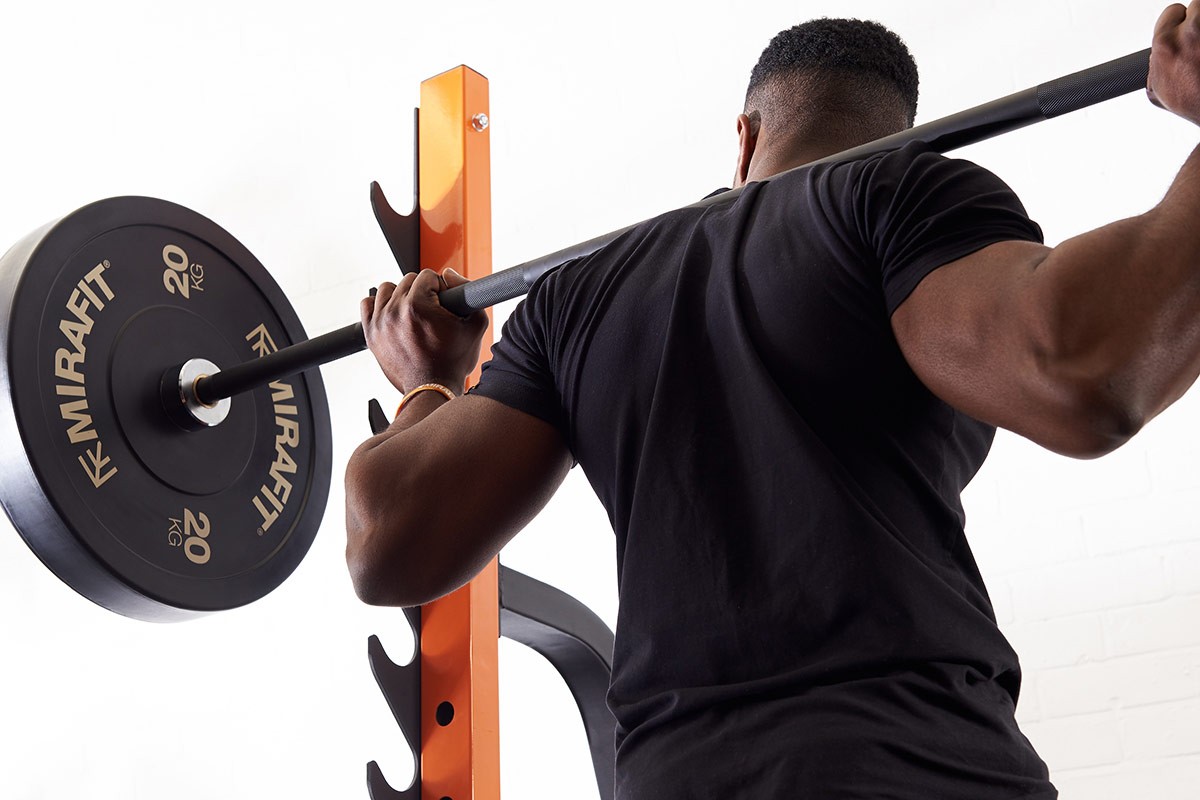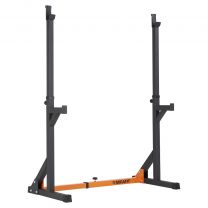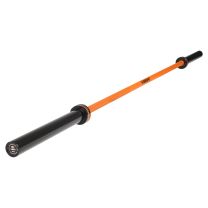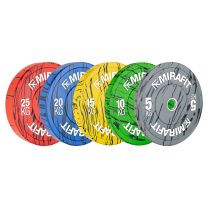How To Improve Your Squat
How To Improve Your Squat

If there's one piece of gym equipment that's going to give you the most bang for your buck, it's the Squat Rack
Maximum gains, increased strength and grip, along with the thighs of a stallion – who can refuse?
And best of all, it doesn't matter where you are on the food chain, squats are for all!
Whether you're just starting out, or a full-on squat junkie, they will always be a session staple. But: if you've pushed past those beginner gains and want to keep building, but your stats are staying the same – what next?
When you first start out at the gym, it's great when you get spurred on by those instant results. But once you start to hit the ceiling, going up an increment requires a different approach. In this blog, we'll be going through the types of squats you can do to inch yourself up to the next level for maximum gains.
CONSIDERATIONS
When you squat, there's a fair amount that you need to consider
• Stretch-Shortening Cycle (SSC)
The Stretch-Shortening Cycle refers to the natural muscle reflex that occurs when you quickly change direction when moving. And it's something that lifters should be aware of, so they can either choose to use it to their advantage, or choose not to use it, in order to get stronger.
If you think about doing a squat, you move down and then back up. As you reach your maximum squat depth, it's possible to employ both biology and physics, to get an extra push from your muscles by moving quickly back into your ascent.
This is something competitors will want to use as it will help them lift more. However, when training your muscles, your focus is going to be hypertrophy and/or strength building – in which case, you don't want the added help.
• Weight Path
When performing a classic, high-back squat, the weight path goes pretty much straight down. Changing the bar position or your stance will change the weight load trajectory. Knowing this will help you target any weak links in the chain. It will also help to develop different muscle groups individually, so you can gradually build to the next level.
It's also important to counter-balance your squat variations. So, if you do back squats, do front squats. If you do good mornings to wake up your lower back, front squats will help you target your core. Equally front squats may put a lot of pressure on your knees, so you can balance these out with box squats. Find out more about these on our blog post on types of squats
What's important to remember is that by doing variations, your muscle recruitment is also different. Check to see what muscles you're targeting and keep that balance in check.
• Flexion
Heard of the butt wink? A stretched/curved lower back when squatting is going to lead to disaster. If your lower back is in flexion, you won't be able to strengthen it. In fact, you'll just leave yourself at risk of injury. Successful muscle building and strengthening comes with tense muscles and straight spine. Keep your hips square and push your butt back and down, with your chest elevated, while breaking at the hips.
• Tibia angle
When there's so much to think about when doing squats, your shins are probably the last thing to cross your mind. However, they are your anchor point and a slight angle adjustment will affect the weight path. A vertical tibia will usually load up your lower back. An angled tibia will put more pressure on your knees. So, whether you're trying to avoid injury, or just target one of your weak spots, it's worth keeping a check on your lower body form to see how you can improve.

• Mobility
More specifically, joint mobility. By doing squats, you'll have noticed going deep isn't easy. And if you really want to reach the bottom of that squat hole, you'll want to improve the flexibility in both your hips and ankles. Also, don't forget your upper body. Many of us sit hunched over a desk all day. This inevitably ends up leaving us with hunched over shoulders. Stretch out your shoulder joints and strengthen your rhomboids to achieve correct posture and bar control while doing squats.
• Body type
Squat Gods like us come in all shapes and sizes. And naturally, this means different people are going to find different variations work better for them. Whether you're extra long-limbed or have an injury that you're trying not to provoke, listen to your body and make the appropriate adjustments.
• Supramaximal stimulus
Partial squats in the long run aren't going to get you far. But by doing half squats while employing supramaximal methods, you can really enhance your strength, muscularity and body composition. Supramaximal loading is giving yourself a weight that's higher than your one-rep max by around five to 10 pounds, so you can build strength. But when you do this, you only go to a half squat position.
This is something you would want to do after your warm up squats. Use the safety bars to catch the weight at a half squat position. It's also important you let the spotters catch your barbell as you go down so you can pause, de-load, and then lift back up again.
It's advisable not to do more than four of these in each set. Make sure you don't try and strain yourself to lift too much.
Ready to get back to the squat rack? You can read our complete guide to squat racks here
For more content, follow us on Instagram, YouTube, TikTok, and on our official Mirafit Facebook page.
Enter your email to signup to our newsletter







